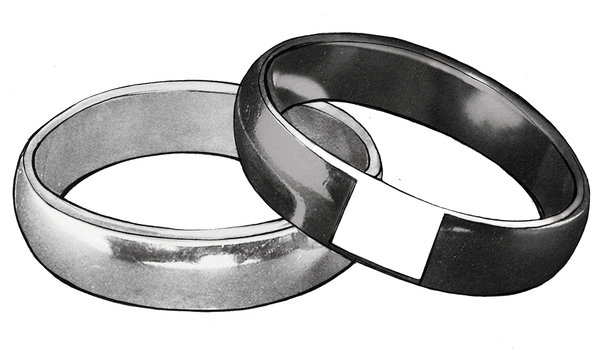 On the Op-Ed page of the New York Times, an assistant professor of medieval European history, Sara Ritchey, has some words of advice:
On the Op-Ed page of the New York Times, an assistant professor of medieval European history, Sara Ritchey, has some words of advice:
By the time of the First Lateran Council, the priest’s wife had become a symbol of wantonness and defilement. The reason was that during this period the nature of the host consecrated at Mass received greater theological scrutiny. Medieval theologians were in the process of determining that bread and wine, at the moment of consecration in the hands of an ordained priest at the altar, truly became the body and blood of Jesus Christ. The priest who handled the body and blood of Christ should therefore be uncontaminated lest he defile the sacred corpus.
The priest’s wife was an obvious danger. Her wanton desire, suggested the 11th-century monk Peter Damian, threatened the efficacy of consecration. He chastised priests’ wives as “furious vipers who out of ardor of impatient lust decapitate Christ, the head of clerics,” with their lovers. According to the historian Dyan Elliott, priests’ wives were perceived as raping the altar, a perpetration not only of the priest but also of the whole Christian community.
The priest’s nuclear family was also seen as a risk to the stability of the church. His children represented a threat to laypersons, who feared that their endowments might be absorbed into the hands of the priest’s offspring to create a rival clerical dynasty. A celibate priest would thus ensure donations from the neighboring landed aristocracy. Furthermore, the priest’s wife was often accused, along with her children, of draining the church’s resources with her extravagance and frivolity. Pope Leo IX attempted to remedy this problem in the 11th century by decreeing that the wives and children of priests must serve in his residence at the Lateran Palace in Rome.
Given this history, I caution the clerical wife to be on guard as she enters her role as a sacerdotal attaché. Her position is an anomalous one and, as the Vatican has repeatedly insisted, one that will not receive permanent welcome in the church. That said, for the time being, it will be prudent for the Vatican to honor the dignity of the wives and children of its freshly ordained married priests. And here, I suggest, a real conversation about the continuation of priestly celibacy might begin.
Clearly, the author sees the Church as a place of rampant misogyny and sexism, where women are the root of all evil. All this, of course, based on writings from the 11th century.
Well. I think four decades of recent history involving the wives of deacons, and the experience of wives of clergy who have become a part of the life of the Church through the Pastoral Provision (not to mention the wives of priests and deacons in the Oriental Church) might offer a less ominous picture than the one painted here.
Any wives out there want to weigh in?
UPDATE: Carl Olson has a good dissection of everything that’s wrong with the piece right here.










